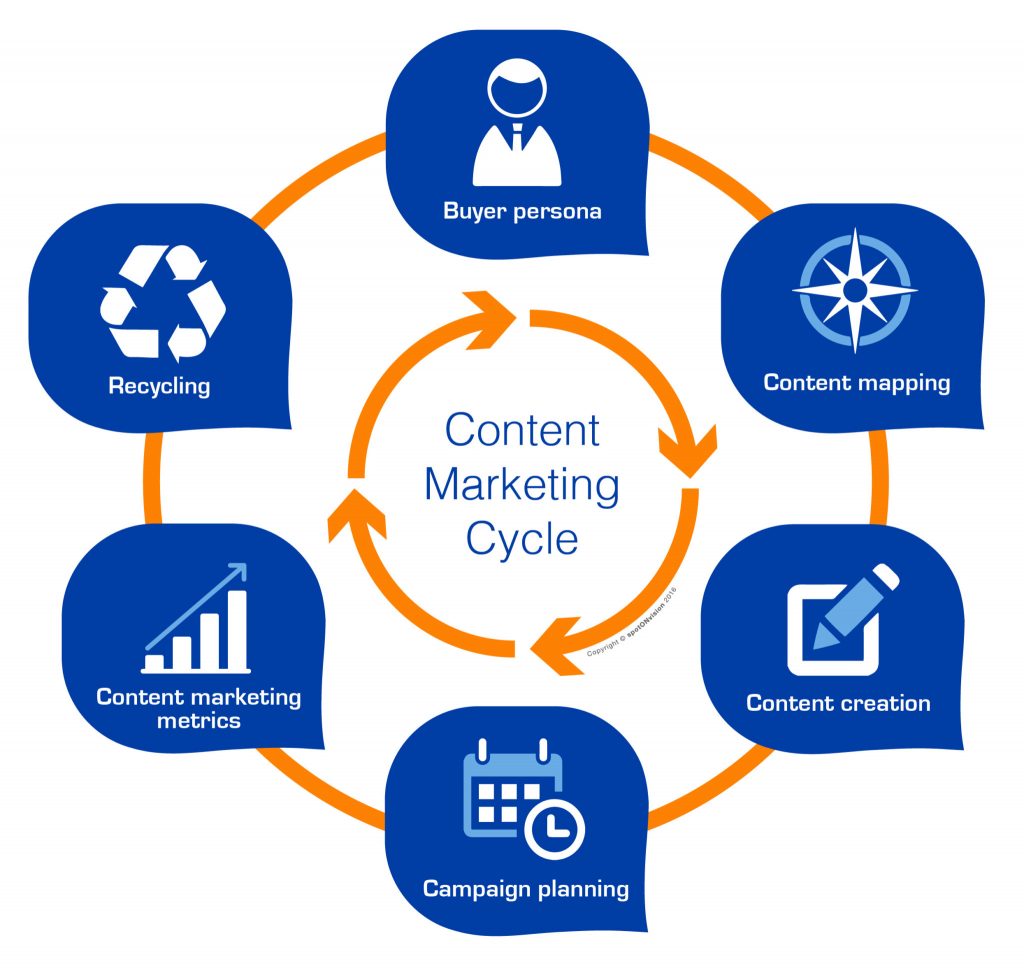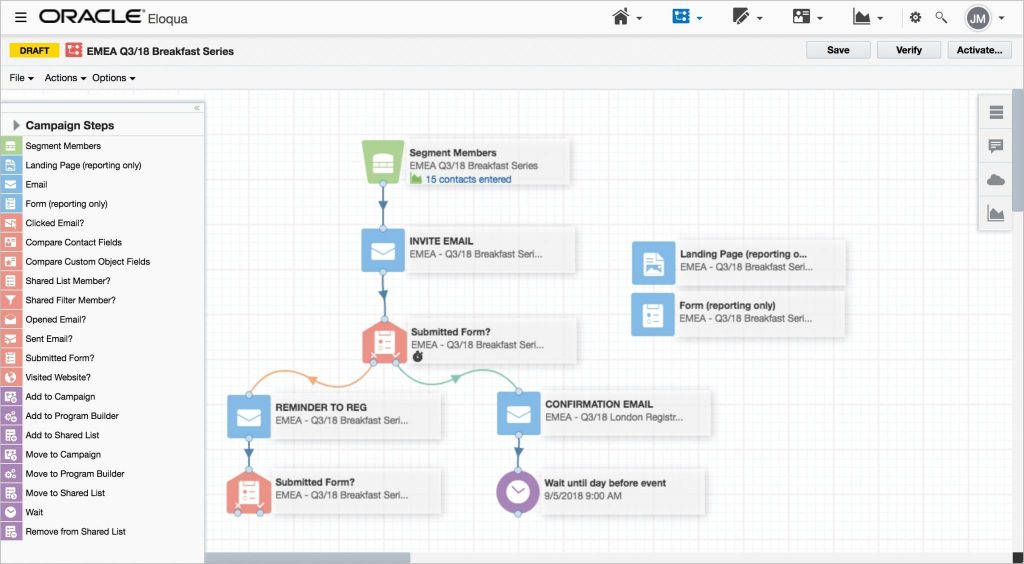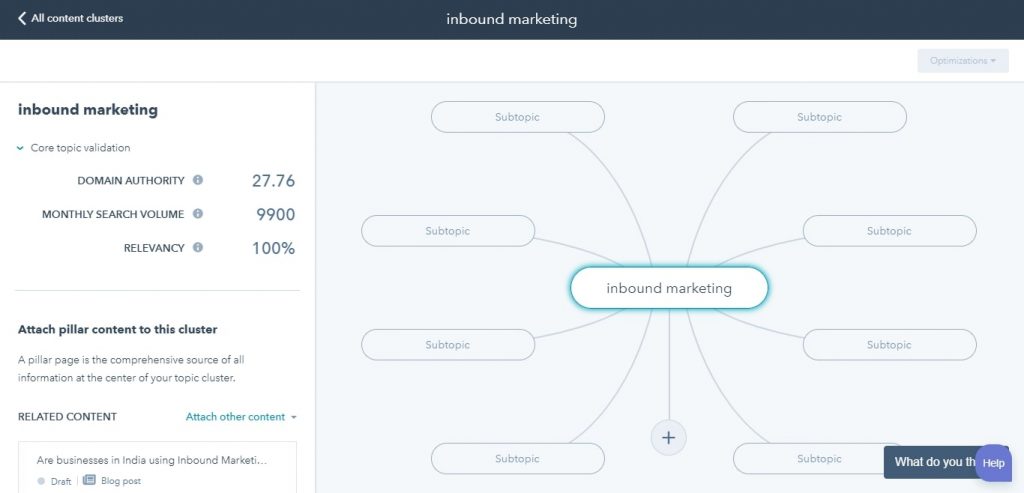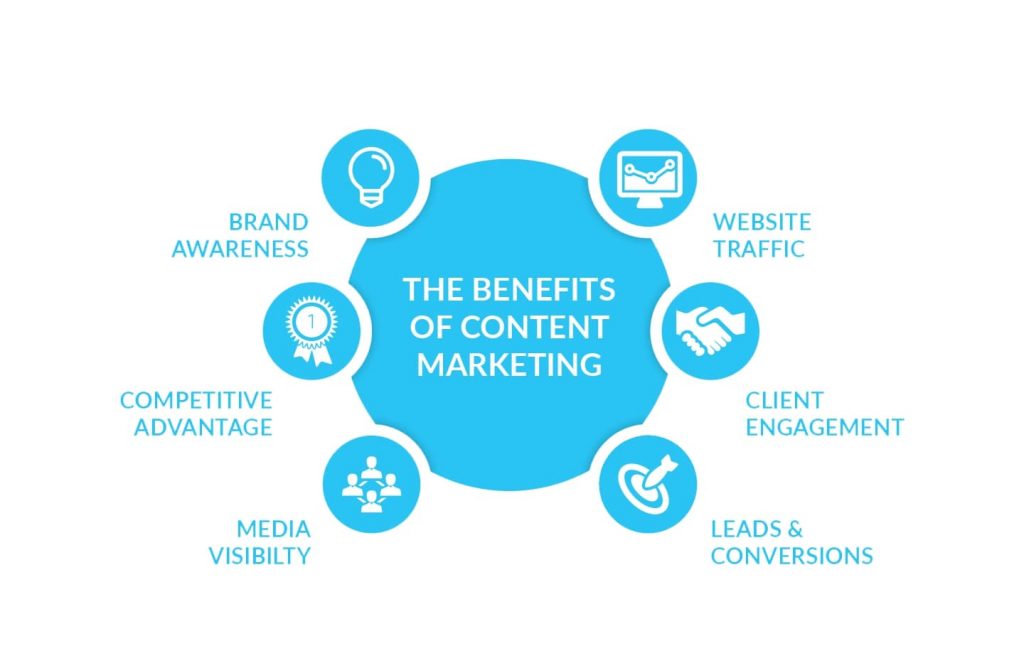Content marketing as a concept has been around for centuries. However, it recently gained momentum in the past decade with mass adoption of search engines and the internet. If you are new to SEO or a seasoned veteran, read more on this definitive guide to content marketing.

Content marketing as per the Content Marketing Institute is defined as a marketing technique that makes use of valuable, consistent, and relevant content to acquire and attract a clearly defined target audience.
The keyword here is “valuable” since any other word would not define or differentiate content marketing from other types of online marketing and advertising.
Basically, where content marketing is concerned people want to:
- consume the content
- consume subsequent promotions attached with
This is why content marketing has a better chance of attracting potential customers online. This is also the reason why it has become an important aspect of SEO and online marketing.
This guide will take you through the working of content marketing, whether it is worth the investment, and various benefits associated with it.
How does content marketing work?
Content creation is integral to the growth of your business in today’s fast-paced online world. The only way you can succeed is by having a well-planned purpose. There are several cogs that work together seamlessly in making a content strategy successful.

This is how content marketing functions:
a. Identify your audience
Your content marketing strategy is only as good as the efforts you put in finding your target audience.
There is no way you can begin creating content before understanding who your audience is.
Target audience means:
- visitors that are more likely to connect your product with your content
- visitors that would be interested in purchasing your product after consuming the content
Defining real audience is important to focus on creating good content as well as creating the right content.
This is how you can understand your target market:
- Ask yourself the problems your company’s product or services can solve. This refers to customer pain points.
- Your next step should be to analyze your current customer data. Look for patterns such as age, gender, employment, income level, and so on.
Now, to identify your target audience, you need to figure out who your direct and indirect competitors are targeting. You should also give thought to your brand’s USP and the features it offers that no one else does.
In short, why should customers come to you and not go to your competition. This will help you narrow down the target audience segment into people you can actually help.
And, that is the whole purpose of content marketing. Once you identify your audience, you can start to identify their interests and pain points.
b. Identify what interests your customers
Ideally, by now you would already have a good understanding of what your product or service is helping solve. Your target audience has some specific needs for which they look for a product that your brand offers.
These are called interests. This is what you need to identify while researching to create a successful content marketing strategy. Your content should be able to coach and educate your potential customers on this problem as they themselves begin to identify and address it.
The purpose of creating content is to address issues which you know your target audience would face, but are not yet aware. Your content should be designed to help them identify the pain point and actually acknowledge it.
When you identify the aspects that interest your audience, you would automatically be able to create content that lists out ways in which your product is superior to your competitors.
You need to prove that you are worth listening to if you want your audience to know that you are worth buying from. The only way anyone will notice your content is if it interests them.
c. Create a content creation plan
Content can take various formats. You can write blogs, create podcasts, design an infographic, or make videos, vlogs, slideshares, and so much more. This should match with your overall SEO strategy.
You need to create a content creation plan that outlines the formats your target audience is interested in. Generally speaking, audience within the age bracket of 19 to 22 is more enamored by infographics and videos as compared to text.
Conversely, if you are targeting older adults, you may want to use infographics or blogs.
The type of format you choose for your content also depends on the topics you have identified. Other factors include your budget, the time you can invest in, and how often you can publish that type of content.
If you already have content, this is the time when you analyze it to figure out whether it is helping you meet your goals or should you change things.
Consider content audits
Content audits are a great place to start before you begin developing a content creation plan. You could also use it to identify content gaps that you can exploit for your purpose.
d. Create a publishing timeline
It is extremely important to create a content calendar so you know exactly when you want to publish on which platform. This will help you keep grounded and let your users know when to expect fresh insights.
One of the biggest content marketing mistakes is lack of planning. So, it is imperative that you schedule your content using a content calendar tool.
For instance, you can make use of Google Calendar to assign due dates for each piece of content. This helps if you are not publishing much content. It is the simplest approach.
However, if you are looking to publish a lot of content and have to manage production workflow and a content team, then you would require some additional features.
Tools like CoSchedule and Asana can help you enhance productivity with task management. Dedicated tools will help you schedule and keep on top of different parts of the content creation process.
e. Decide where to publish your content
As you work through the various steps of content marketing, you would get a general sense where your target audience hangs out. You would also know your strengths in terms of an online presence.
It’s best to work on your strengths and start building from there, rather than trying to do everything all at once.
Don’t forget to have a look at web analytics in Google or any other search engine to be absolutely sure. For instance, you could identify whether most of the social activity takes place on Facebook or YouTube.
Buzzsumo is another great tool to identify where your content is doing great. You can use their Content Analysis tool to see statistics on:
- Top content in the past year
- Shares by network
- Shares by content length
- Shares by content type
This is especially helpful when you want to refine your content to make it better aimed.
Examples of typical returns in a content marketing SEO strategy
Many businesses wonder whether content marketing is really worth it and whether it will help the company achieve a positive ROI. There have been several studies to understand whether investing in social media, blogging, and marketing automation pays off or not. See below in this content marketing guide for some examples of companies that have enjoyed great success.
Eloqua

Eloqua’s findings suggest that a larger sized company can expect to invest $33,000 a month and a mid-size $12,000 a month towards content marketing. This includes costs associated with Chief Content Officer, Managing Editor, freelancers, software, and hosting.
However, the costs tend to drop significantly after the first five months. This is because content marketing as a strategy takes momentum to build.
Once you achieve traffic, you can reap more benefits from returning visitors, social media shares and other similar factors.
Content marketing would give you better leads in the long term at reduced costs. This is far better than the ongoing costs involved with paid marketing.
Hubspot
Hubspot’s findings suggest that while inbound marketing (blogs, email, social media, and SEO) require more time in the beginning as compared to outbound channels, they do help in significantly reducing costs.

Content marketing may require you to put in efforts, but the efforts are truly worth the result. The strategy can significantly help reduce costs per lead.
Search Engine Journal reports that over time inbound leads tend to cost 61% less as compared to outbound leads.
This is the reason an increasing number of companies are embracing the concept of content marketing. Nearly 60% marketers have already adopted content marketing as a foremost aspect of their digital marketing strategy.
Blogging can take your brand places it has never been
It is a fact that blogging can do more for your business single-handedly than all other SEO factors combined together. This is because blogging gives you a platform to add text to your site.

Blogs don’t just add value and relevancy for your readers. It also allows web crawlers to determine that your site is up to date. In any case, search engine bots find it easier to crawl through text as compared to videos or images.
Further, companies that maintained an active blog generated 126% more leads as compared to brands that did not. Blogging also helps bring in more customers and opens your brand to new avenues making content marketing truly worth it.
SEO when done right is often the best ROI marketing channel. Content marketing is a safe and sustainable white-hat SEO technique.
What are the benefits of content marketing?
A major purpose of content marketing is to provide meaningful content that helps people and is loved by search engines.

Content marketing when done right can solve a number of problems and provide several benefits. Some of the major ones are:
a. Gain Trust
Content has the power to assist readers towards achieving a goal. For instance, if you are a business, a well-written comparison guide in your niche may help your readers make an informed decision which they would not regret later.
This will eventually lead them to trust your business as a market leader. Whenever you offer something that provides help, it generates a lot of positive attitude in the hearts of the consumers.
This holds true for content marketing as well. People tend to keep coming back for more help, which establishes a working relationship based on authority, loyalty, and trust.
b. Educate customers
Content marketing is not about cut and dry advertisements. That is regular or traditional marketing and advertisement. Instead, content marketing is more focused on understanding the pain points of your target audience and doing your best to address them.
Videos, blogs, podcasts, and articles are a great way to advertise your brand to your customers while allowing them to take away something helpful.
A major benefit of educating customers through content marketing is that they tend to associate with the brand on a more personal level.
c. White Hat SEO Value
It goes without saying that search engines love valuable content that people find relevant and useful.
This is the foremost reason why SEO gurus call content marketing one of the best strategies to attract the right kind of audience with a higher ranking.
The best part about content marketing is that you don’t get useless traffic on your site. You get leads that have a higher rate of converting.
Content marketing allows for a more long-term relationship with your potential customers that inherently adds SEO value to your site and brand.
5 Fun Facts About Content Publishing History You May not be Aware Of
Fact #1
John Deere, in 1895, invested in the production of the Furrow, the world’s first agricultural magazine. The magazine is now published in 14 languages in over 115 countries. It is thought to have invented content marketing.
Fact #2
In 1904, the famous company that coined Jell-O distributed free copies of a recipe book involving their product. The content gimmick helped in selling more than a $1 million worth of product in the next two years.
Fact #3
P&G began a promotion in the form of radio soap operas in the 1930s with brands such as Oxydol and Duz. Their content gave rise to the term “soap operas”.
Fact #4
Hasbro partnered with Marvel in 1982 to create GI Joe comic book series (though the movies have never been stellar in regards to GI Joe). This led to a huge revolution in toy marketing. The same marketing technique is carried forward by both Marvel and DC comics.
Fact #5
LEGO launched a new Brick Kicks Magazine in 1987 which got transformed to LEGO Club Magazine. Keeping with the times, LEGO replaced the magazine with the Lego Life app, which attracts hundreds of thousands of 5 to 9 years old kids.